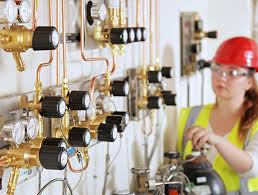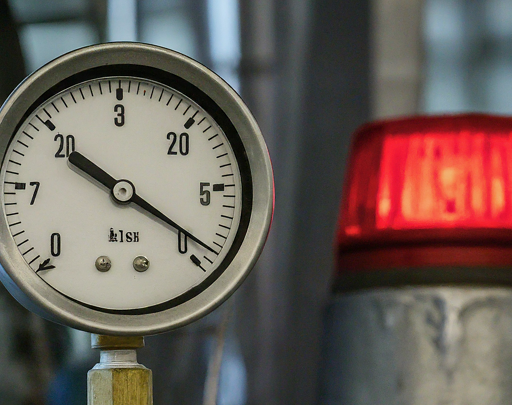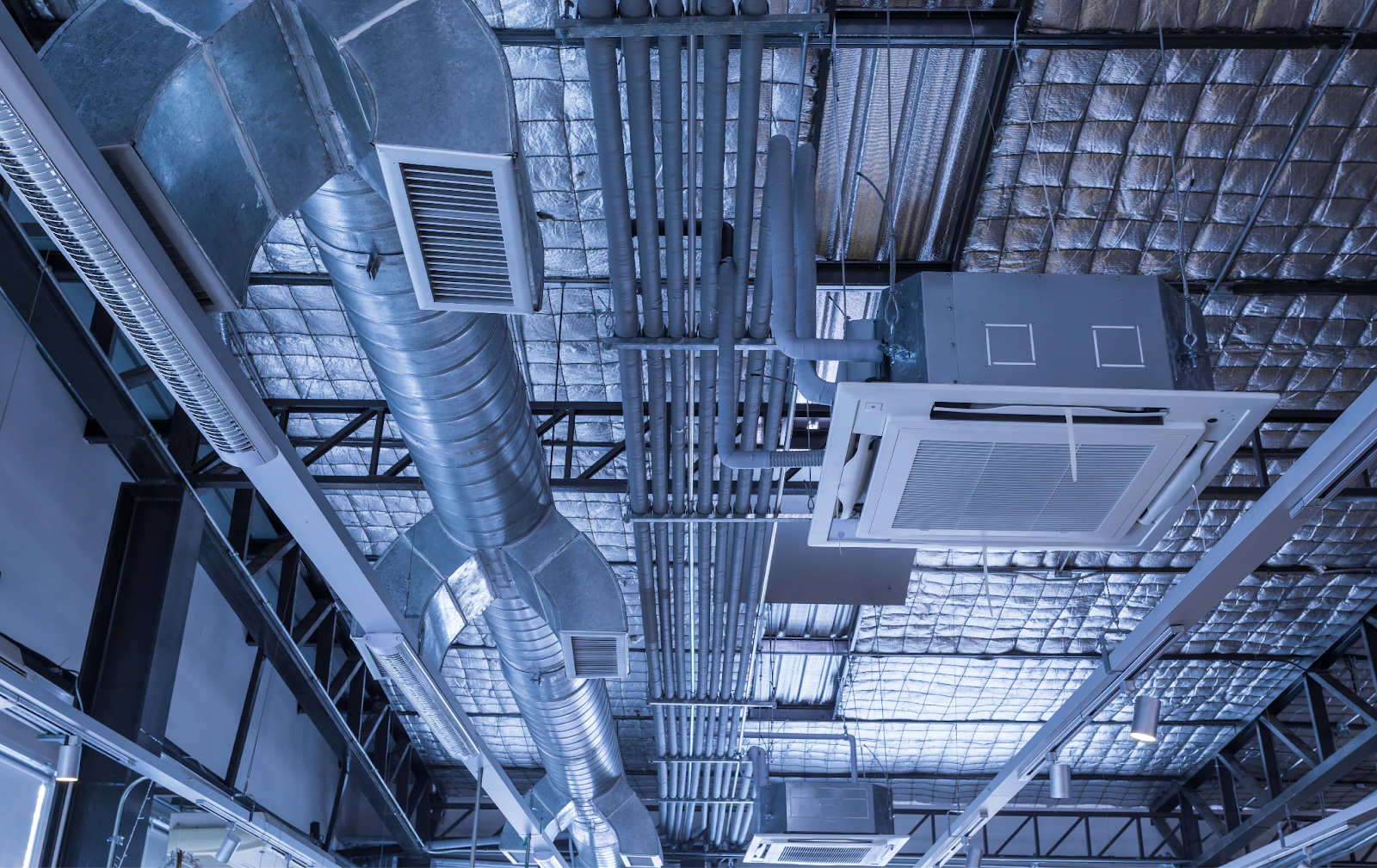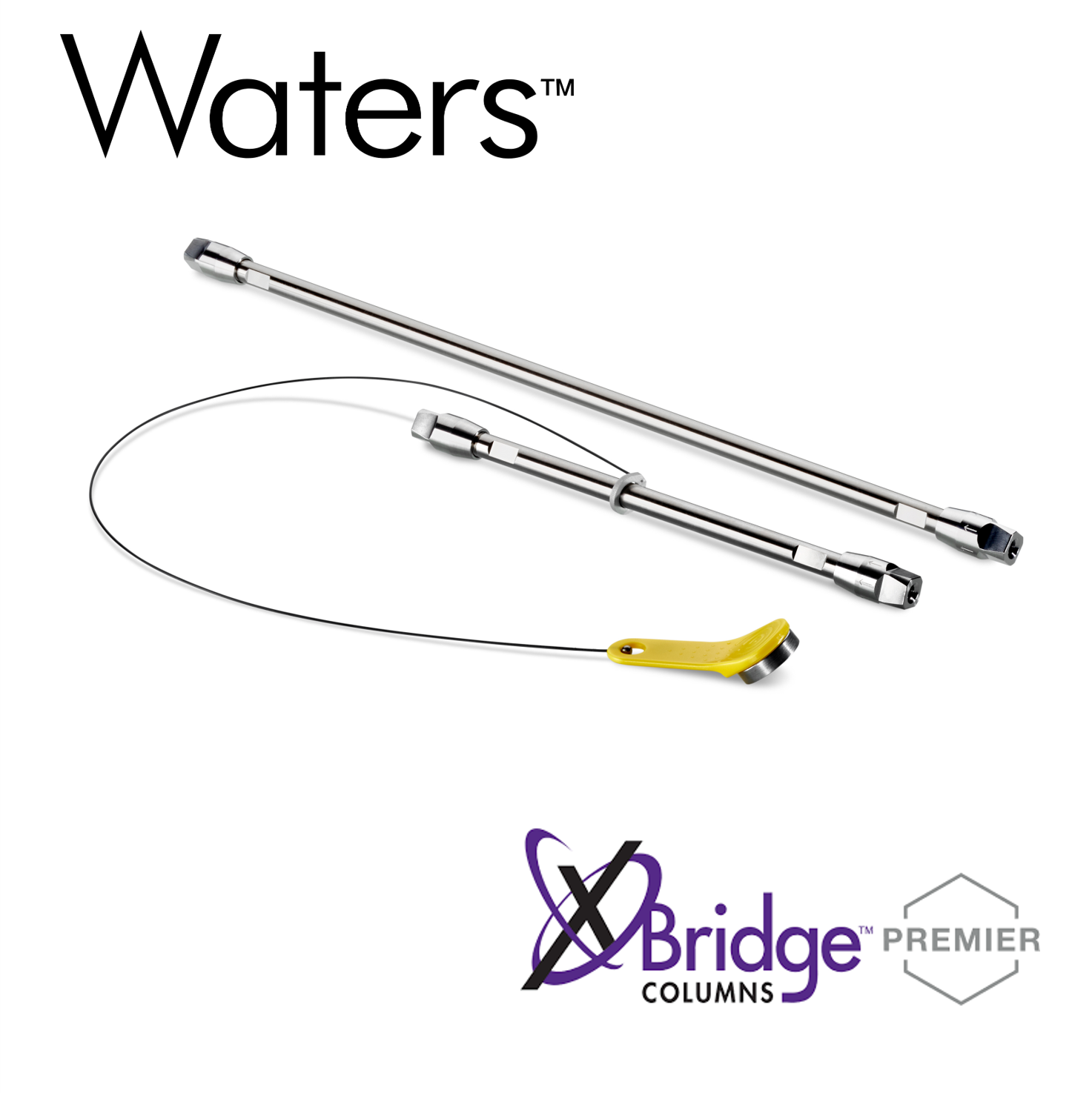Comparing gas line materials and configurations

The Crucial Role of Gas Line Materials in Laboratory Operations

In the realm of scientific research, laboratories serve as the bedrock of innovation, where groundbreaking discoveries are made and technological advancements are driven. The seamless operation of these laboratories hinges on a multitude of factors, including the availability and reliability of essential utilities, such as gas lines. Gas lines, often overlooked in the grand scheme of laboratory infrastructure, play a pivotal role in supporting a wide range of scientific experiments and analytical procedures. From the precise delivery of gases for chromatography and mass spectrometry to the controlled combustion of fuels in furnaces and ovens, gas lines are indispensable components of modern laboratories.
The selection of appropriate gas line materials is paramount to ensuring the integrity, safety, and longevity of laboratory operations. The choice of materials directly impacts the performance, reliability, and lifespan of gas lines, ultimately influencing the accuracy and reproducibility of experimental results. A comprehensive understanding of the properties and characteristics of various gas line materials is essential for laboratory managers, procurement professionals, and researchers alike. This knowledge empowers them to make informed decisions regarding the selection and installation of gas lines, optimizing laboratory efficiency and minimizing potential risks.
The importance of gas line materials extends beyond the immediate functionality of the laboratory. The choice of materials can have significant implications for the overall safety of the research environment. Certain materials may be susceptible to corrosion, leaks, or degradation over time, posing potential hazards to personnel and equipment. Conversely, selecting robust and durable materials can mitigate these risks, creating a safer and more reliable laboratory setting. Moreover, the environmental impact of gas line materials should not be overlooked. Some materials may release harmful substances into the environment, while others are more sustainable and environmentally friendly.
The selection of gas line materials is a multifaceted decision that requires careful consideration of various factors, including the specific gases being delivered, the operating pressures and temperatures, the compatibility with other laboratory equipment, and the overall budget constraints. This article delves into the intricacies of gas line materials, providing a comprehensive overview of the most commonly used materials, their properties, advantages, and limitations. By examining the characteristics of different materials, we aim to shed light on the factors that influence the selection process and provide valuable insights for laboratory professionals seeking to optimize their gas line infrastructure.
The article will explore the following key aspects of gas line materials:
- Commonly used gas line materials: A detailed examination of the properties, advantages, and limitations of materials such as copper, stainless steel, brass, and plastic.
- Factors influencing material selection: A comprehensive analysis of the key considerations that guide the choice of gas line materials, including gas type, operating conditions, compatibility, and cost.
- Gas line configurations: An exploration of different gas line configurations, including single-point, multi-point, and manifold systems, and their implications for laboratory operations.
- Safety considerations: A discussion of the safety implications of gas line materials, including corrosion, leaks, and fire hazards, and best practices for mitigating these risks.
- Environmental impact: An assessment of the environmental impact of different gas line materials, considering factors such as material sourcing, manufacturing processes, and end-of-life disposal.
By providing a comprehensive understanding of gas line materials and configurations, this article aims to empower laboratory professionals to make informed decisions that optimize the performance, safety, and sustainability of their gas line infrastructure. This knowledge will contribute to the advancement of scientific research by ensuring the reliable and efficient delivery of gases, ultimately supporting the pursuit of groundbreaking discoveries and technological innovations.
The article will delve into the intricacies of gas line materials, providing a comprehensive overview of the most commonly used materials, their properties, advantages, and limitations. By examining the characteristics of different materials, we aim to shed light on the factors that influence the selection process and provide valuable insights for laboratory professionals seeking to optimize their gas line infrastructure.
The article will explore the following key aspects of gas line materials:
- Commonly used gas line materials: A detailed examination of the properties, advantages, and limitations of materials such as copper, stainless steel, brass, and plastic.
- Factors influencing material selection: A comprehensive analysis of the key considerations that guide the choice of gas line materials, including gas type, operating conditions, compatibility, and cost.
- Gas line configurations: An exploration of different gas line configurations, including single-point, multi-point, and manifold systems, and their implications for laboratory operations.
- Safety considerations: A discussion of the safety implications of gas line materials, including corrosion, leaks, and fire hazards, and best practices for mitigating these risks.
- Environmental impact: An assessment of the environmental impact of different gas line materials, considering factors such as material sourcing, manufacturing processes, and end-of-life disposal.
By providing a comprehensive understanding of gas line materials and configurations, this article aims to empower laboratory professionals to make informed decisions that optimize the performance, safety, and sustainability of their gas line infrastructure. This knowledge will contribute to the advancement of scientific research by ensuring the reliable and efficient delivery of gases, ultimately supporting the pursuit of groundbreaking discoveries and technological innovations.
The Critical Role of Gas Line Materials and Configurations in Laboratory Operations
The efficient and reliable delivery of gases is paramount in numerous scientific disciplines, from analytical chemistry and materials science to biotechnology and pharmaceutical research. Gas piping and distribution systems, often referred to as gas lines, serve as the lifeblood of these laboratories, enabling the precise control and delivery of gases essential for a wide range of experiments and processes. The choice of materials and configurations for these gas lines is not merely a logistical decision but a critical factor influencing the accuracy, safety, and overall success of research endeavors. This article delves into the intricacies of gas line materials and configurations, exploring the factors that influence their selection, the advantages and disadvantages of different options, and the implications for laboratory operations.
The Importance of Gas Line Materials and Configurations
The selection of gas line materials and configurations is a multifaceted decision that requires careful consideration of several factors, including the specific gases being delivered, the operating pressures and temperatures, the potential for corrosion and contamination, and the overall safety and regulatory requirements of the laboratory environment. The choice of materials directly impacts the performance, longevity, and safety of the gas line system, while the configuration influences the flow characteristics, accessibility, and ease of maintenance.
Gas Compatibility and Material Selection
The compatibility of the gas line material with the gases being delivered is a fundamental consideration. Different gases exhibit varying degrees of reactivity and corrosiveness, necessitating the selection of materials that can withstand these chemical interactions. For instance, gases like oxygen and chlorine are highly reactive and can cause rapid degradation of certain metals, requiring the use of materials like stainless steel or copper alloys. In contrast, inert gases like nitrogen and argon are less reactive and can be safely delivered through a wider range of materials, including copper, brass, and even plastic.
Pressure and Temperature Considerations
The operating pressures and temperatures within the gas line system are crucial factors influencing material selection. High-pressure applications, such as those involving compressed gases, require materials with high tensile strength and resistance to stress cracking. Similarly, elevated temperatures can lead to material degradation and embrittlement, necessitating the use of heat-resistant materials like stainless steel or specialized alloys. The choice of materials must ensure that the gas line can withstand the anticipated pressures and temperatures without compromising its integrity.
Corrosion and Contamination Concerns
Corrosion and contamination are significant concerns in gas line systems, as they can compromise the purity of the delivered gases and potentially lead to equipment malfunctions or safety hazards. The choice of materials should minimize the risk of corrosion by selecting materials resistant to the specific gases being delivered and the environmental conditions within the laboratory. Additionally, the use of appropriate coatings, linings, and filters can further mitigate corrosion and contamination risks.
Safety and Regulatory Compliance
Safety is paramount in laboratory operations, and gas line systems are no exception. The selection of materials and configurations must comply with relevant safety regulations and standards, ensuring the safe handling and delivery of gases. For instance, the use of materials that can withstand potential fire hazards, such as those with high ignition temperatures, is essential. Additionally, the design and installation of gas lines must adhere to industry best practices and regulatory requirements to minimize the risk of leaks, explosions, or other safety incidents.
Common Gas Line Materials
A variety of materials are commonly used in gas line systems, each with its own advantages and disadvantages. The selection of the most appropriate material depends on the specific application and the factors discussed above.
Copper
Copper is a widely used material for gas lines due to its excellent conductivity, ductility, and resistance to corrosion. It is relatively inexpensive and readily available, making it a cost-effective option for many applications. However, copper can be susceptible to corrosion by certain gases, such as chlorine and sulfur dioxide, and its use may be restricted in environments with high levels of these gases.
Brass
Brass, an alloy of copper and zinc, offers similar advantages to copper in terms of conductivity and ductility. It is also relatively inexpensive and readily available. However, brass is generally less resistant to corrosion than copper and may not be suitable for applications involving highly corrosive gases. It is often used in gas line fittings and valves due to its machinability and durability.
Stainless Steel
Stainless steel is a highly corrosion-resistant material, making it an excellent choice for gas lines handling corrosive gases or operating in harsh environments. It is also highly durable and can withstand high pressures and temperatures. However, stainless steel is more expensive than copper or brass, and its use may be cost-prohibitive for some applications.
Polyvinyl Chloride (PVC)
PVC is a plastic material that is commonly used for gas lines handling inert gases, such as nitrogen and argon. It is lightweight, corrosion-resistant, and relatively inexpensive. However, PVC is not suitable for applications involving corrosive gases or high temperatures, and its use may be restricted by regulatory requirements.
Polyethylene (PE)
PE is another plastic material that is often used for gas lines handling inert gases. It is flexible, durable, and resistant to corrosion. However, PE is not as resistant to high temperatures as PVC and may not be suitable for applications involving elevated temperatures.
Gas Line Configurations
The configuration of a gas line system refers to the arrangement of pipes, fittings, valves, and other components. The configuration should be designed to ensure efficient and safe gas delivery, while also considering factors such as accessibility, maintainability, and cost.
Centralized Gas Distribution Systems
Centralized gas distribution systems are commonly used in large laboratories or facilities where multiple gas sources are required. In this configuration, a central gas supply is connected to a network of pipes that distribute gas to various points throughout the facility. This approach offers several advantages, including:
- Efficient gas delivery: Centralized systems allow for the efficient delivery of gas to multiple locations from a single source.
- Reduced costs: By minimizing the number of gas cylinders and regulators, centralized systems can reduce overall costs.
- Improved safety: Centralized systems allow for better control and monitoring of gas flow, reducing the risk of leaks or accidents.
However, centralized systems can also be complex and require specialized expertise for installation and maintenance. Additionally, the potential for leaks or failures in the central system can impact the entire facility.
Decentralized Gas Distribution Systems
Decentralized gas distribution systems are often used in smaller laboratories or facilities where gas requirements are more localized. In this configuration, individual gas cylinders or sources are connected to dedicated gas lines that serve specific areas or equipment. This approach offers several advantages, including:
- Flexibility: Decentralized systems allow for greater flexibility in gas delivery, as individual gas sources can be easily added or removed.
- Reduced complexity: Decentralized systems are generally simpler to install and maintain than centralized systems.
- Improved reliability: The failure of one gas source in a decentralized system will not affect other areas of the facility.
However, decentralized systems can be less efficient than centralized systems, as they require multiple gas sources and regulators. Additionally, they may be more expensive to operate due to the increased number of gas cylinders and regulators.
Gas Line Fittings and Valves
Gas line fittings and valves are essential components of any gas distribution system. Fittings are used to connect pipes and other components, while valves are used to control gas flow. The selection of fittings and valves should be based on the specific gas being delivered, the operating pressures and temperatures, and the overall safety requirements of the system.
Gas Line Safety Features
Gas line systems should incorporate safety features to minimize the risk of leaks, explosions, or other accidents. These features may include:
- Pressure relief valves: These valves are designed to release excess pressure in the system, preventing over-pressurization and potential explosions.
- Leak detectors: Leak detectors are used to monitor for gas leaks and alert personnel to potential hazards.
- Emergency shut-off valves: These valves allow for the rapid shut-off of gas flow in case of an emergency.
Factors Influencing Gas Line Design
The design of a gas line system should be tailored to the specific needs of the laboratory or facility. Several factors should be considered during the design process, including:
Gas Requirements
The specific gases required by the laboratory or facility, their purity levels, and their flow rates should be carefully considered. This information will determine the size and configuration of the gas line system, as well as the materials used.
Operating Conditions
The operating pressures and temperatures within the gas line system should be considered, as these factors will influence the choice of materials and fittings. The potential for corrosion and contamination should also be assessed, as these factors can impact the longevity and safety of the system.
Space Constraints
The available space within the laboratory or facility should be considered, as this will influence the layout and configuration of the gas line system. The system should be designed to minimize space requirements while ensuring accessibility for maintenance and repairs.
Budgetary Considerations
The cost of materials, installation, and maintenance should be considered during the design process. The selection of materials and configurations should balance performance and safety with budgetary constraints.
Regulatory Compliance
The gas line system should comply with all relevant safety regulations and standards. This may involve the use of specific materials, fittings, and safety features, as well as adherence to specific installation and maintenance procedures.
Conclusion
The choice of materials and configurations for gas line systems is a critical decision that impacts the performance, safety, and overall success of laboratory operations. By carefully considering the factors discussed in this article, laboratories can ensure that their gas line systems are designed and installed to meet their specific needs, while also adhering to relevant safety regulations and standards. This will contribute to the efficient and reliable delivery of gases, supporting the advancement of scientific research and innovation.
Choosing the Right System: A Recap
The selection of gas line materials and configurations is a critical decision for any laboratory, impacting safety, performance, and long-term cost-effectiveness. This comprehensive exploration has delved into the intricacies of various materials, their properties, and the factors influencing their suitability for specific applications. From the robust nature of stainless steel to the versatility of copper and the cost-effectiveness of PEX, each material presents a unique set of advantages and disadvantages. The configuration of the gas line, whether centralized or decentralized, also plays a crucial role in optimizing gas distribution and ensuring efficient operation.
The decision-making process should be guided by a thorough understanding of the specific requirements of the laboratory, including the types of gases used, the flow rates, the pressure requirements, and the environmental conditions. A careful assessment of the pros and cons of each material and configuration, coupled with a consideration of factors such as cost, installation complexity, and maintenance needs, will lead to the most appropriate choice for your specific needs.
Key Takeaways and Recommendations
To ensure optimal performance, safety, and longevity of your gas piping and distribution systems, consider the following key takeaways and recommendations:
- Material Selection:some text
- Stainless Steel: Ideal for high-purity applications, corrosive environments, and demanding pressure requirements. Its durability and resistance to corrosion make it a preferred choice for critical applications.
- Copper: Offers a balance of cost-effectiveness, ease of installation, and good corrosion resistance. Suitable for general laboratory applications where high purity is not a primary concern.
- PEX: Provides flexibility, ease of installation, and cost-effectiveness. Well-suited for applications where high-pressure requirements are not a major factor.
- Other Materials: Consider specialized materials like PTFE or PFA for applications requiring extreme chemical resistance or high temperatures.
- Configuration:some text
- Centralized Systems: Offer centralized control, efficient gas distribution, and potential cost savings. However, they may require more complex installation and maintenance.
- Decentralized Systems: Provide flexibility and ease of installation, particularly for smaller laboratories or specific applications. However, they may require more individual gas regulators and potentially higher overall costs.
- Safety Considerations:some text
- Gas Detection Systems: Implement reliable gas detection systems to monitor gas leaks and ensure a safe working environment.
- Proper Ventilation: Ensure adequate ventilation in the laboratory to prevent gas accumulation and potential hazards.
- Regular Inspections: Conduct regular inspections of gas lines and equipment to identify potential issues and ensure proper functioning.
- Cost-Effectiveness:some text
- Long-Term Investment: Consider the long-term cost implications of material selection and configuration, including installation, maintenance, and potential replacement costs.
- Energy Efficiency: Explore options for energy-efficient gas distribution systems to minimize operational costs.
Products You may Like
Check out other IT- Tech product that suit your taste
Subscribe to our newsletter
Stay updated with IT-Tech Insights
Related posts
Check out other IT- Tech Scientific Resources

Sizing gas distribution systems for lab demand
Properly sizing a gas distribution system is crucial for ensuring safe and efficient gas delivery in a laboratory setting. This article delves into the key factors to consider when designing and implementing a gas distribution system, including gas type, flow rate, pressure requirements, and safety regulations. We discuss the importance of accurate calculations and the use of appropriate materials and components to ensure optimal performance and compliance with industry standards. By understanding these principles, you can create a reliable and efficient gas distribution system that meets the specific needs of your laboratory.

Resolving vacuum system failures
Vacuum systems are essential for various laboratory applications in Public Health Engineering, from filtration and sample preparation to analytical techniques. When these systems malfunction, it can disrupt research and compromise results. This article offers a practical approach to resolving vacuum system failures, covering common causes such as leaks, pump malfunctions, and filter clogging. We provide step-by-step troubleshooting tips and preventative measures to ensure the smooth operation of your vacuum system and maintain the integrity of your research.

Choosing HVAC controls for lab environments
Maintaining a controlled environment is essential for research labs. HVAC systems play a critical role in regulating temperature, humidity, and air quality, impacting experiment accuracy and safety. This article guides you through key considerations when selecting HVAC controls for your lab. Factors like lab size, equipment sensitivity, and budget are crucial. We explore different HVAC system types, including VAV systems, fan coil units, and dedicated outdoor air systems, highlighting their advantages and disadvantages. By understanding these factors, you can choose the most suitable HVAC system to ensure optimal lab conditions and support your research endeavors.










































































